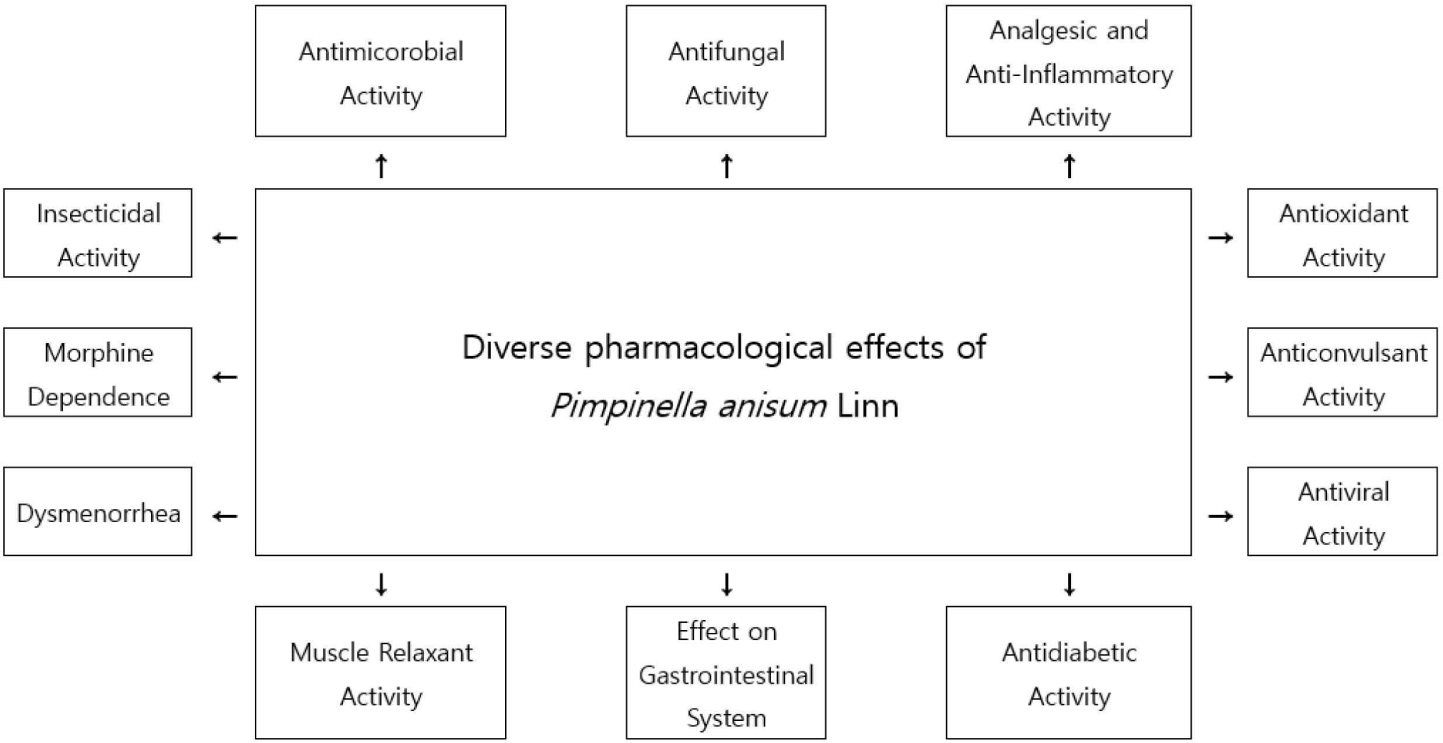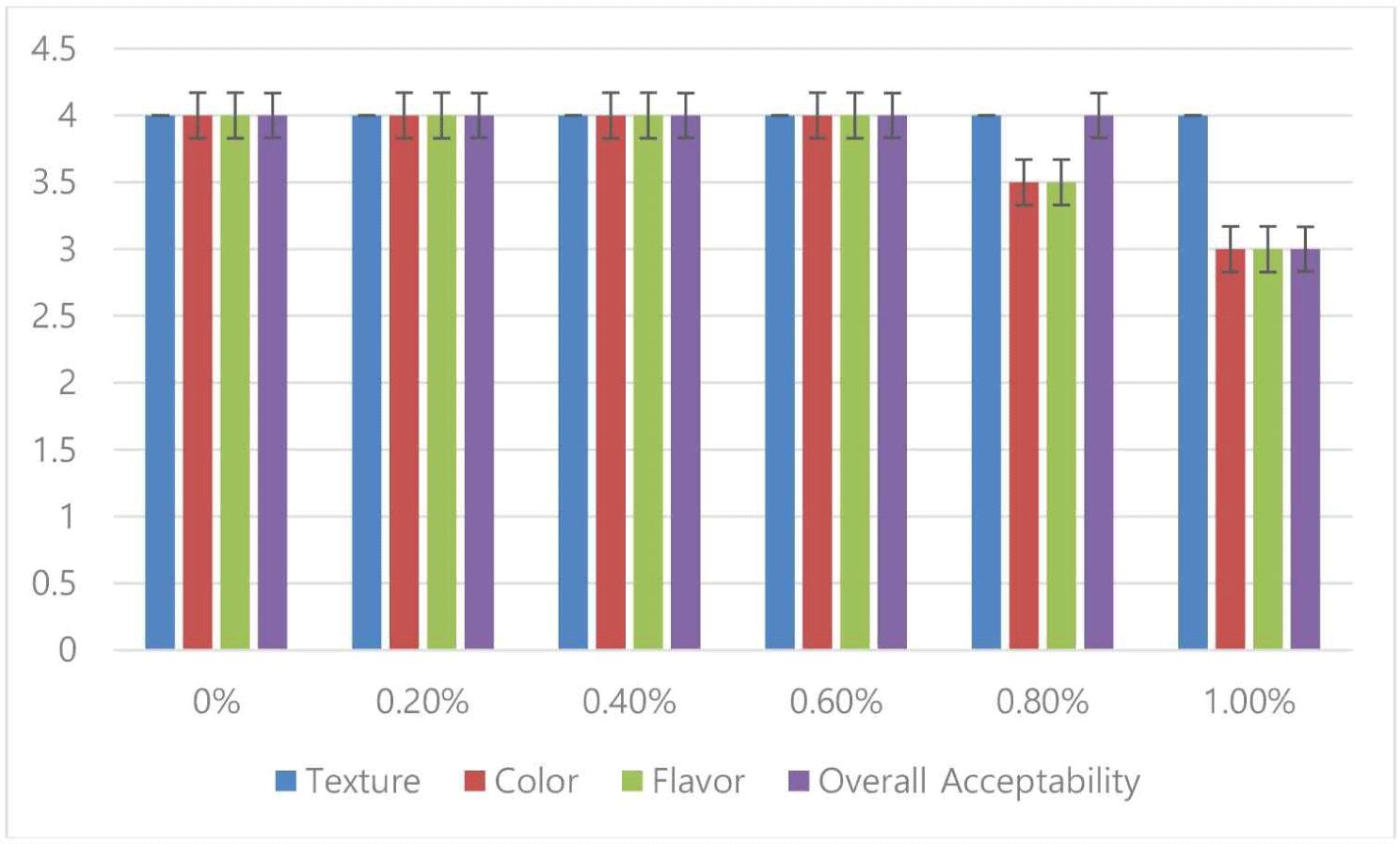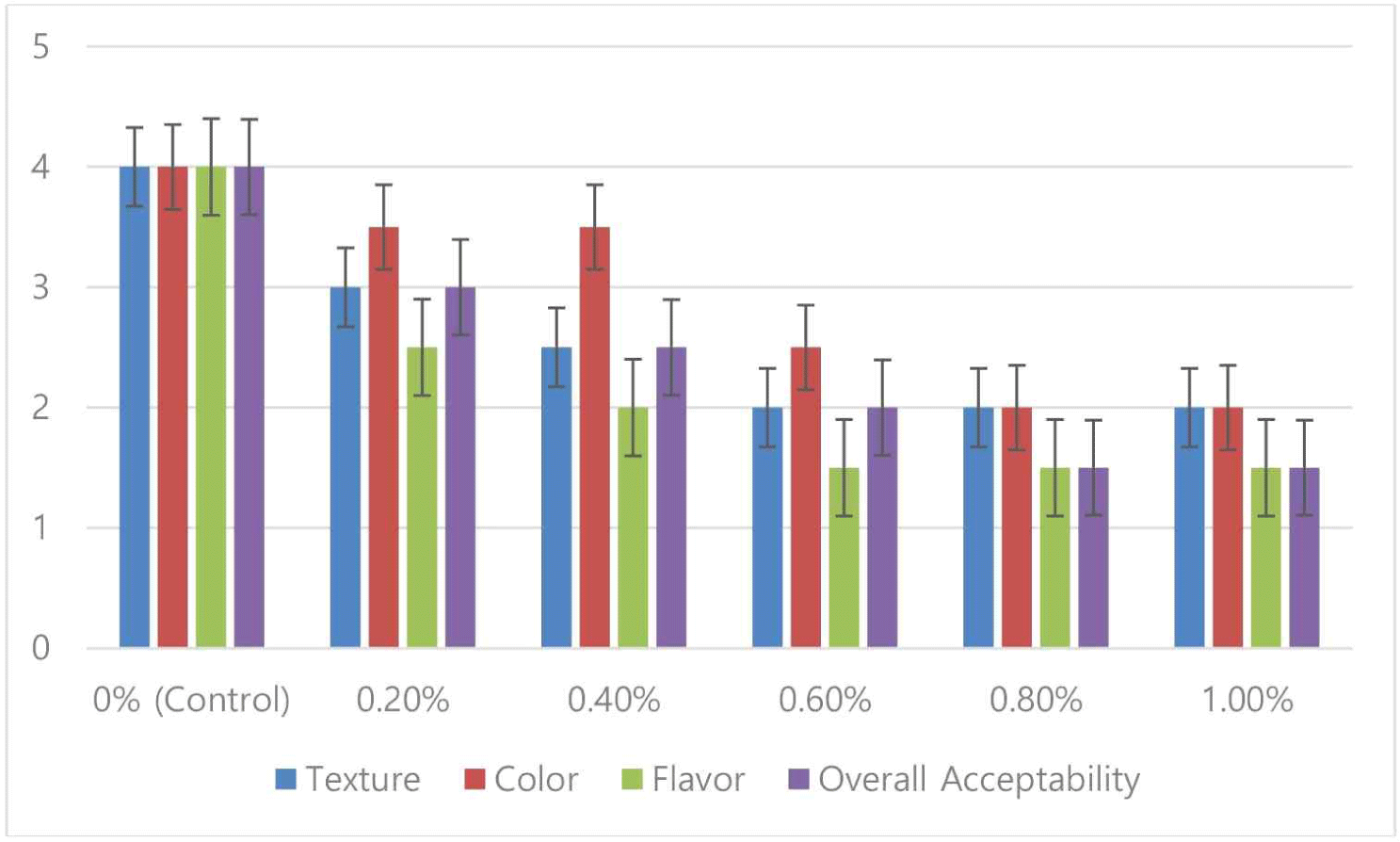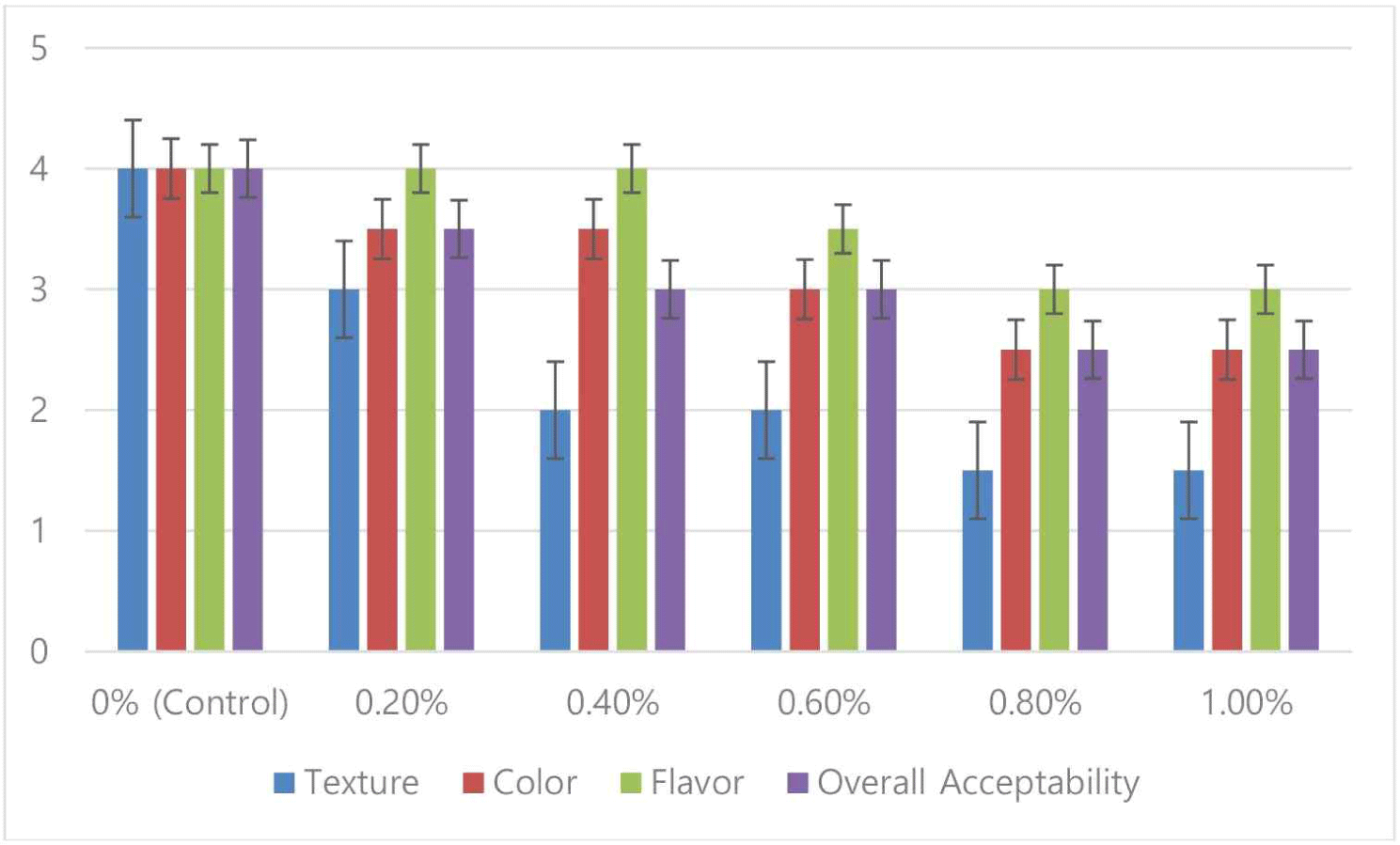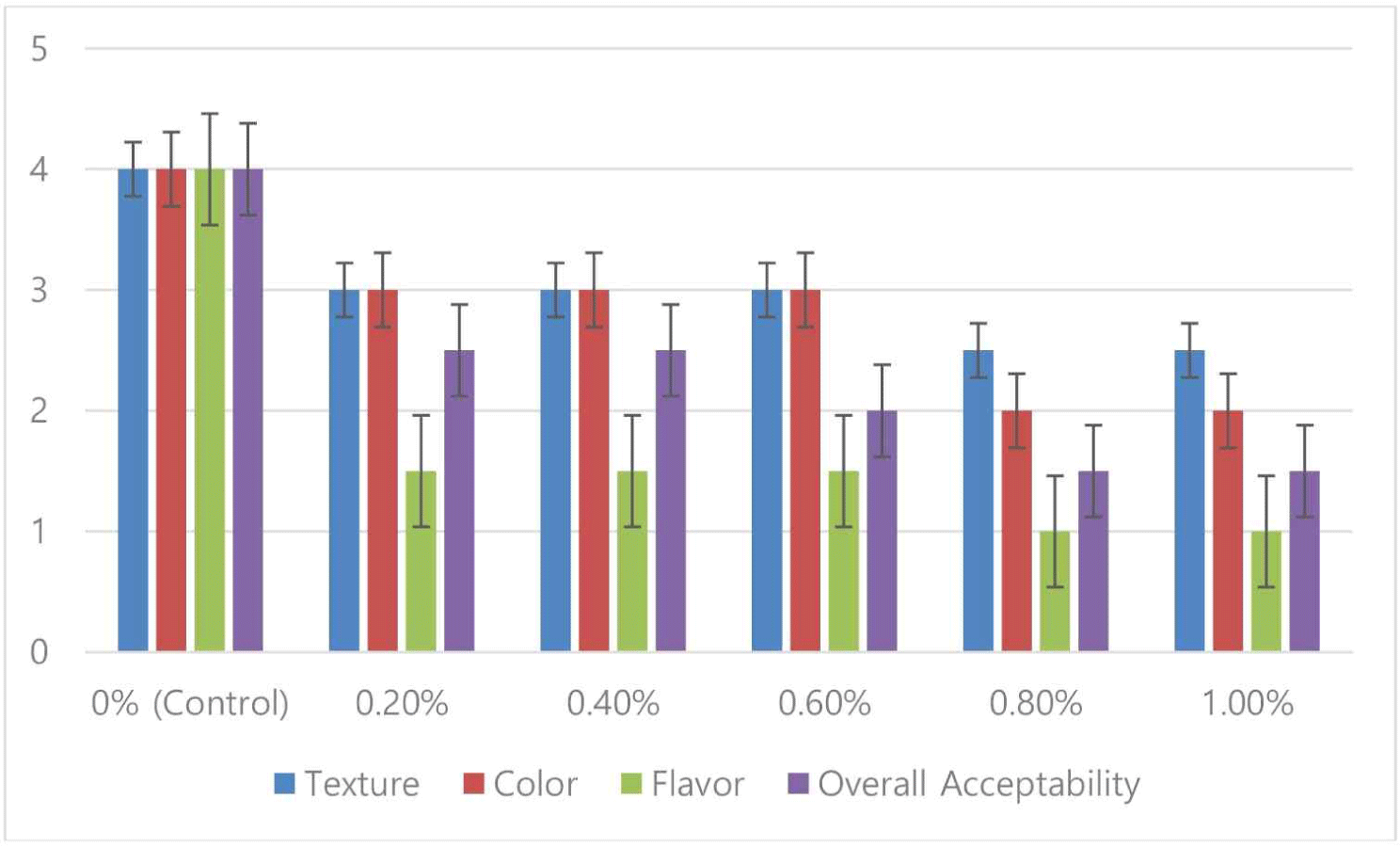Introduction
For thousands of years, traditional herbs have been widely used as foods or medicines that play a major role in improving human health [1,2]. Among them, anise seeds, an aromatic plant, have been used in traditional medicine as well as the pharmaceutical industry for a long time [3]. In general, the origin of anise (Pimpinella anisum), an herbaceous annual plant, is known to be the Mediterranean, Iran, India, Turkey, etc., and it is mostly cultivated for fruits and seeds. Additionally, Pimpinella anisum is called by various names in each country [2,4]. As far as is known, the fruit, also known as anise, began to be used in traditional medicine in Asia in the early 5th century [5]. Fatty oil, protein, carbohydrates, and cellulose fiber are known to be contained in the fruit of this plant [2,5].
Anethole is the most important component of anise [6]. Anethole is mainly used in the pharmaceutical, food, perfume and flavor industries [6]. Additionally, it is known that the yield and anethole content of anise are directly influenced by genotype, ecological conditions, and agricultural practices (irrigation, plant population, fertilizer, sowing date) [7]. Furthermore, anise is widely known as an essential oil, and is known to have a unique odor and scent [2,8]. The main component of anise oil is known to be trans-anethole (75%–90%). Anise oil also contains trace amounts of coumarins (umbelliferone, umbelliprenin, bergapten, scopoletin), lipids (fatty acids, beta-amyrin, stigmasterol and their salts), and flavonoids (flavonols, flavones, glycosides, rutin, isoorientin, and isovitexin), protein, and carbohydrates [8,9]. In other words, anise oil was one of the oldest spices used in cooking and medical treatment, and there were many well-known research reports on the anti-oxidant, anti-bacterial, and anti-analgesic properties of anise oil [1,6–9] (Fig. 1). However, little research has been done on the addition of anise oil to dairy-based and nondairy-based foods.
Hence, the ultimate goals of this study is to assess the characteristics of dairy-based and nondairy-based foods supplemented with anise oil of various addition to dairy-based foods such as pasteurized milk, sterilized milk, yoghurt and nondairy-based foods such as soy milk, oat milk, almond milk, respectively. Additionally, this study is conducted to evaluate the anti-bacterial activity of anise oil against various food-borne bacteria.
Materials and Methods
Radish oil was essential oils 100% pure star anise (1 fl oz) as the food additive was purchased from Now Foods (USA).
Anise oil was supplemented to dairy-base foods (pasteurized milk, sterilized milk, and yoghurt) and nondairy-based foods (soy milk, oat milk, almond milk) at various addition (0.2% increments from 0% up to 1.0%). Then, samples of dairy-base foods (pasteurized milk, sterilized milk, and yoghurt) and nondairy-based foods (soy milk, oat milk, almond milk) supplemented with anise oil were remained about 10°C. Dairy-based and nondairy-based foods used in this study were bought at big mart located in Eastern Seoul.
Dairy-base foods (pasteurized milk, sterilized milk, and yoghurt) and nondairy-based foods (soy milk, oat milk, almond milk) with various addition of anise oil supplemented were made and then storage at refrigerator (about 10°C). The five person who had well-trained graduated students assessed the characteristics of dairy-base foods (pasteurized milk, sterilized milk, and yoghurt) and nondairy-based foods (soy milk, oat milk, almond milk) supplemented with various addition of anise oil. The samples prepared in this study were arbitrarily assessed in plastic disposable cups at 10°C. The category of characteristic of the samples assessed in this study was texture, color, taste, and overall acceptability, respectively. Grounded on the 5 hedonistic grade, each category were assessed on one grade of 1 (very bad), 2 (bad), 3 (average), 4 (good) and 5 (excellent).
pH of dairy-base foods (pasteurized milk, sterilized milk, and yoghurt) and nondairy-based foods (soy milk, oat milk, almond milk) supplemented with anise oil at various addition were assessed by the Thermo Scientific™ Orion™ Star A211 pH Benchtop Meter (Thermo Fisher Scientific, USA).
Using the spot-on-lawn assay with some modifications, the anti-bacterial activity of Anise oil was evaluated against Gram-positive bacteria (Bacillus cereus and Staphylococcus aureus) and Gram-negative bacteria (Cronobacter sakazakii, Escherichia coli, and Salmonella Enteritidis). According to protocol, the bacteria tested in this study were cultured on Mueller-Hinton broth (MHB; Difco, USA) and incubated at 38°C during over 18 hours. Next, the cultured broth was diluted by MHB to approximately 0.5 McFarland and then spread onto Mueller-Hinton agar (MHA; Difco) using sterilized cotton swabs. The negative control (0 μL), 1× (10 μL), 2× (20 μL), and 3× (30 μL) of anise oil was directly dropped onto the surface of the MHA, respectively. All petri dish treated in this study were kept during over 18 hours at 38°C, and the zone of inhibition was estimated by ruler and naked eyes.
Results and Discussion
Figs. 2–4 described the grade of characteristics of dairy-based foods assessed by five person.
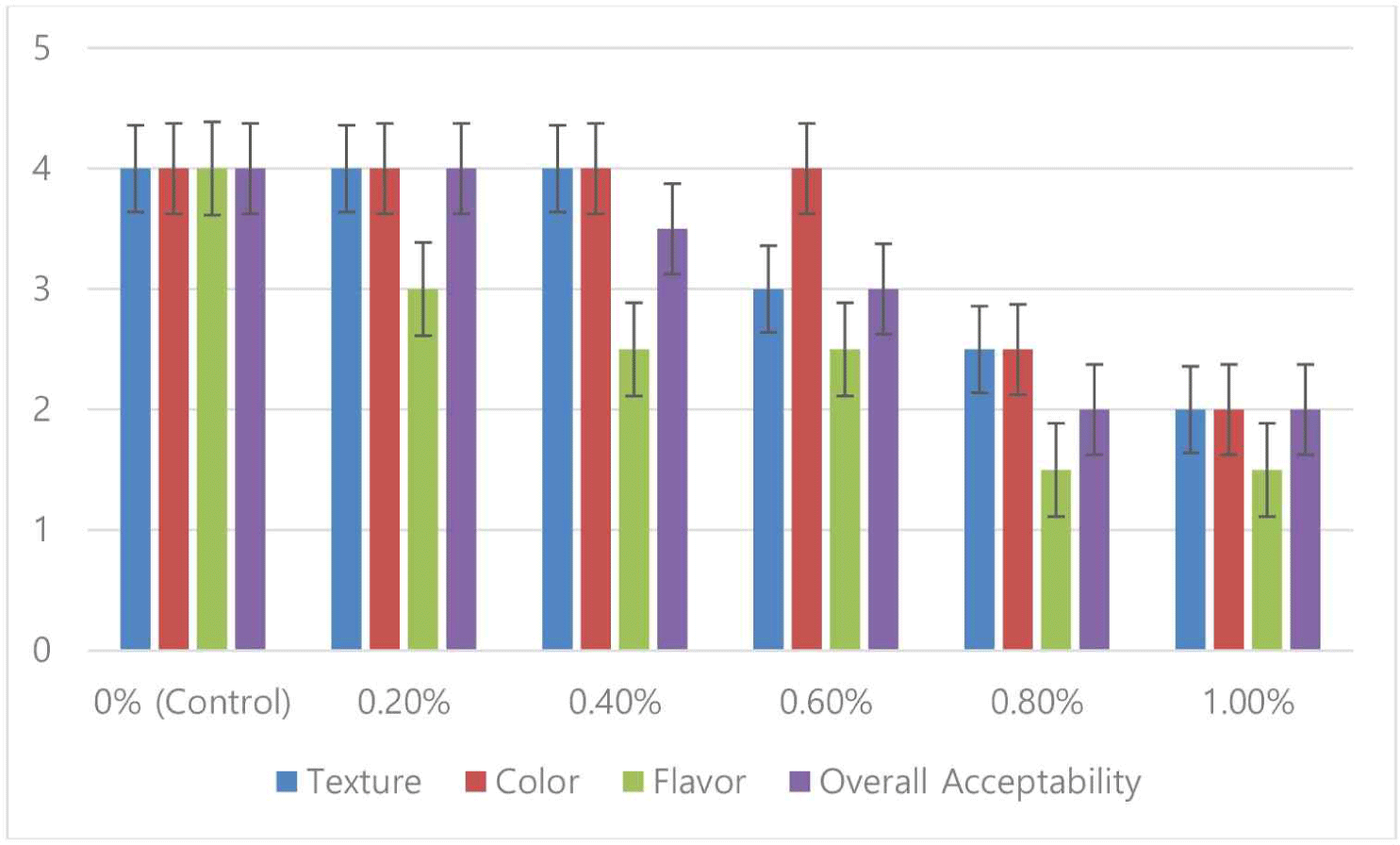
Pasteurized milk was supplemented with various addition (0.2% increments from 0% up to 1%) of anise oil. When anise oil was supplemented from 0.2% to 1% in pasteurized milk, the grade of texture scoped from 4.0 to 2.0, the grade of color scoped from 4.0 to 2.0, the grade of flavor scoped from 3.0 to 1.5, and the grade of overall acceptability scoped from 4.0 to 2.0, it appeared lower than the control sample (Fig. 2). Ground on the statistical evaluation of the characteristics of pasteurized milk taken in this study, there was the significant difference predicted between the treated samples and the control sample in texture, color, flavor, and overall acceptability (p<0.05). As the amounts of anise oil increased, the grade of characteristics of texture, color, flavor, and overall acceptability tended to decrease (Fig. 2). In this study, the pasteurized milk supplemented with 0.2%–0.40% of anise oil described the better performance compared with control sample.
Sterilized milk was supplemented with various addition (0.2% increments from 0% up to 1%) of anise oil. When anise oil was supplemented from 0.2% to 1% in sterilized milk, the grade of texture scoped from 4.0 to 1.5, the grade of color scoped from 4.0 to 2.5, the grade of flavor scoped from 3.5 to 2.0, and the grade of overall acceptability scoped from 3.5 to 2.5, it appeared lower than the control sample (Fig. 3). Ground on the statistical evaluation of the characteristics of sterilized milk taken in this study, there was the significant difference predicted between the treated samples and the control sample in texture, color, flavor, and overall acceptability (p<0.05). As the amounts of anise oil increased, the grade of the characteristics of texture, color, flavor, and overall acceptability tended to decrease (Fig. 3). In this study, the sterilized milk supplemented with 0.2% of anise oil described the better performance compared with control sample.
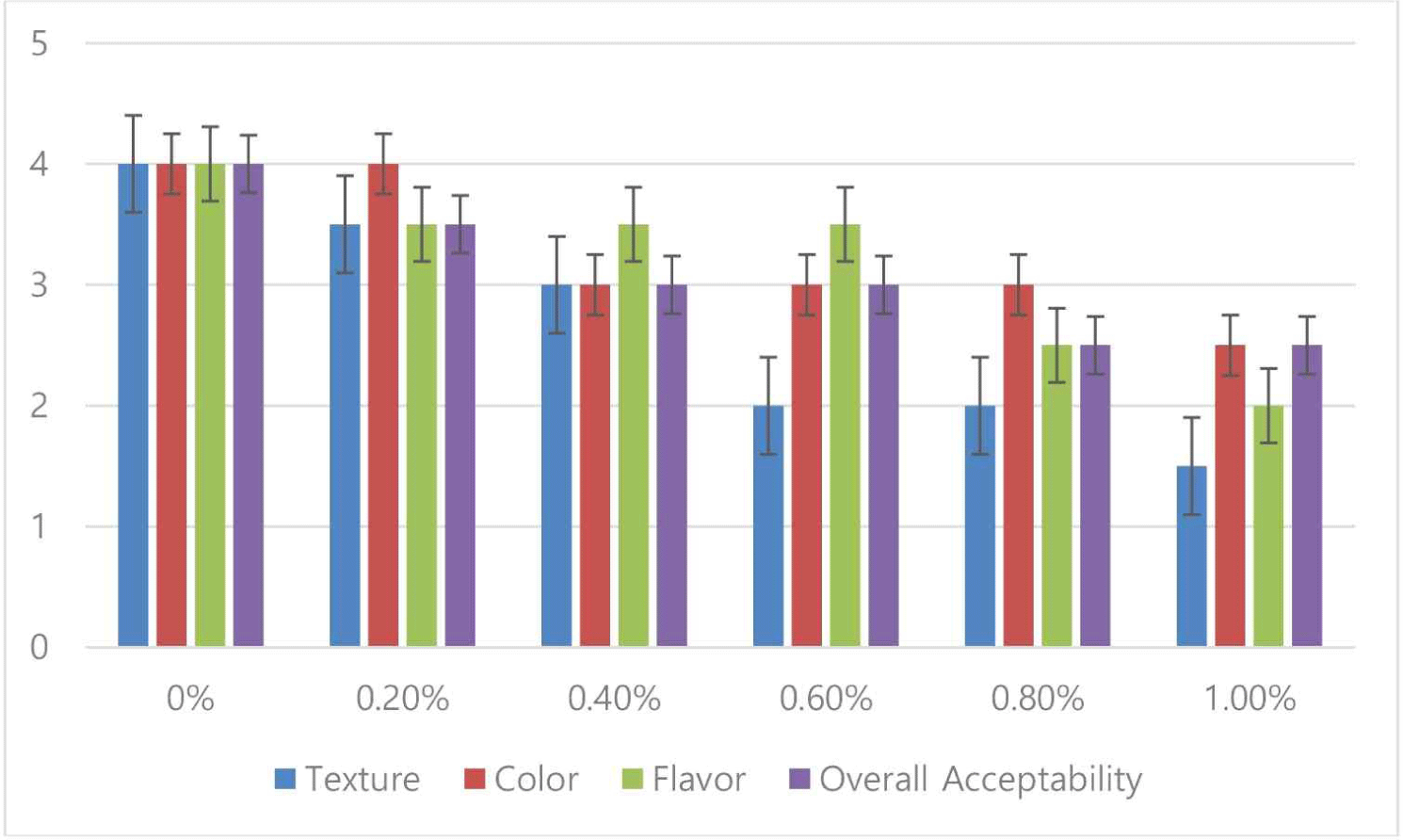
Yoghurt was supplemented with various addition (0.2% increments from 0% up to 1%) of anise oil. When anise oil was supplemented from 0.2% to 1% in yoghurt, the grade of texture scoped from 4.0 to 4.0, the grade of color scoped from 4.0 to 3.0, the grade of flavor scoped from 4.0 to 3.0, and the grade of overall acceptability scoped from 4.0 to 3.0, it appeared lower than the control samples (Fig. 4). But, the grade of texture was very similar to that of the control sample, and there was no significant difference (p>0.05). Ground on the statistical evaluation of the characteristics of yoghurt taken in this study, there was the significant difference predicted between the treated samples and the control sample in color, flavor, and overall acceptability except texture (p<0.05). As the amounts of anise oil increased, the grade of the characteristics of texture, color, flavor, and overall acceptability tended to decrease (Fig. 4). In this study, the yoghurt supplemented with 0.6% of anise oil described the better performance compared with control sample.
Figs. 5–7 described the grade of the characteristics of nondairy-based foods evaluated by five panels.
Soy milk was supplemented with various addition (0.2% increments from 0% up to 1%) of anise oil. When anise oil was supplemented from 0.2% to 1% in soy milk, the grade of texture scoped from 3.0 to 2.0, the grade of color scoped from 3.5 to 2.0, the grade of flavor scoped from 2.5 to 1.5, and the grade of overall acceptability scoped from 3.0 to 1.5, it appeared lower than the control sample (Fig. 5). Ground on the statistical evaluation of the characteristics of soy milk taken in this study, there was the significant difference observed between the treated samples and the control sample in texture, color, flavor, and overall acceptability (p<0.05). As the amounts of anise oil increased, the grade of the characteristics of texture, color, flavor, and overall acceptability tended to decrease (Fig. 5). In this study, the soy milk supplemented with 0.2% of anise oil described the better performance compared with control sample.
Oat milk was supplemented with various addition (0.2% increments from 0% up to 1%) of anise oil. When anise oil was supplemented from 0.2% to 1% in oat milk, the grade of texture scoped from 3.0 to 1.5, the grade of color scoped from 3.5 to 2.5, the grade of flavor scoped from 4.0 to 3.0, and the grade of overall acceptability scoped from 3.5 to 2.5, it appeared lower than the control sample (Fig. 6). Ground on the statistical evaluation of the characteristics of oat milk taken in this study, there was the significant difference predicted between the treated samples and the control sample in texture, color, flavor, and overall acceptability (p<0.05). As the amounts of anise oil increased, the grade of the characteristics of texture, color, flavor, and overall acceptability tended to decrease (Fig. 6). In this study, the oat milk supplemented with 0.2% of anise oil described the better performance compared with control sample.
Almond milk was supplemented with various addition (0.2% increments from 0% up to 1%) of anise oil. When anise oil was supplemented from 0.2% to 1% in almond milk, the grade of texture scoped from 3.0 to 2.5, the grade of color scoped from 3.0 to 2.0, the grade of flavor scoped from 1.5 to 1.0, and the grade of overall acceptability scoped from 2.5 to 1.5, it appeared lower than control sample (Fig. 7). Ground on the statistical evaluation of the characteristics of almond milk taken in this study, there was the significant difference predicted between the treated samples and the control sample in texture, color, flavor, and overall acceptability (p<0.05). As the amounts of anise oil increased, the grade of the characteristics of texture, color, flavor, and overall acceptability tended to decrease (Fig. 7). In this study, the almond milk supplemented with 0.2 of anise oil described the better performance compared with control sample.
pH of dairy-based foods and nondairy-based foods without supplement of anise oil was 6.76 (pasteurized milk), 6.72 (sterilized milk), 4.25 (yoghurt), 7.03 (soy milk), 8.16 (oat milk), and 7.39 (almond milk), respectively (Fig. 8). And pH of dairy-based foods and nondairy-based foods supplemented with various addition (0.2% increments from 0% up to 1%) of anise oil described similar to that of dairy-based foods and nondairy-based foods with no supplement of anise oil in this study (Fig. 8). Therefore, ground on the statistical evaluation of pH taken in this study, there was no significant difference predicted between the treated samples and the control sample (p>0.05).
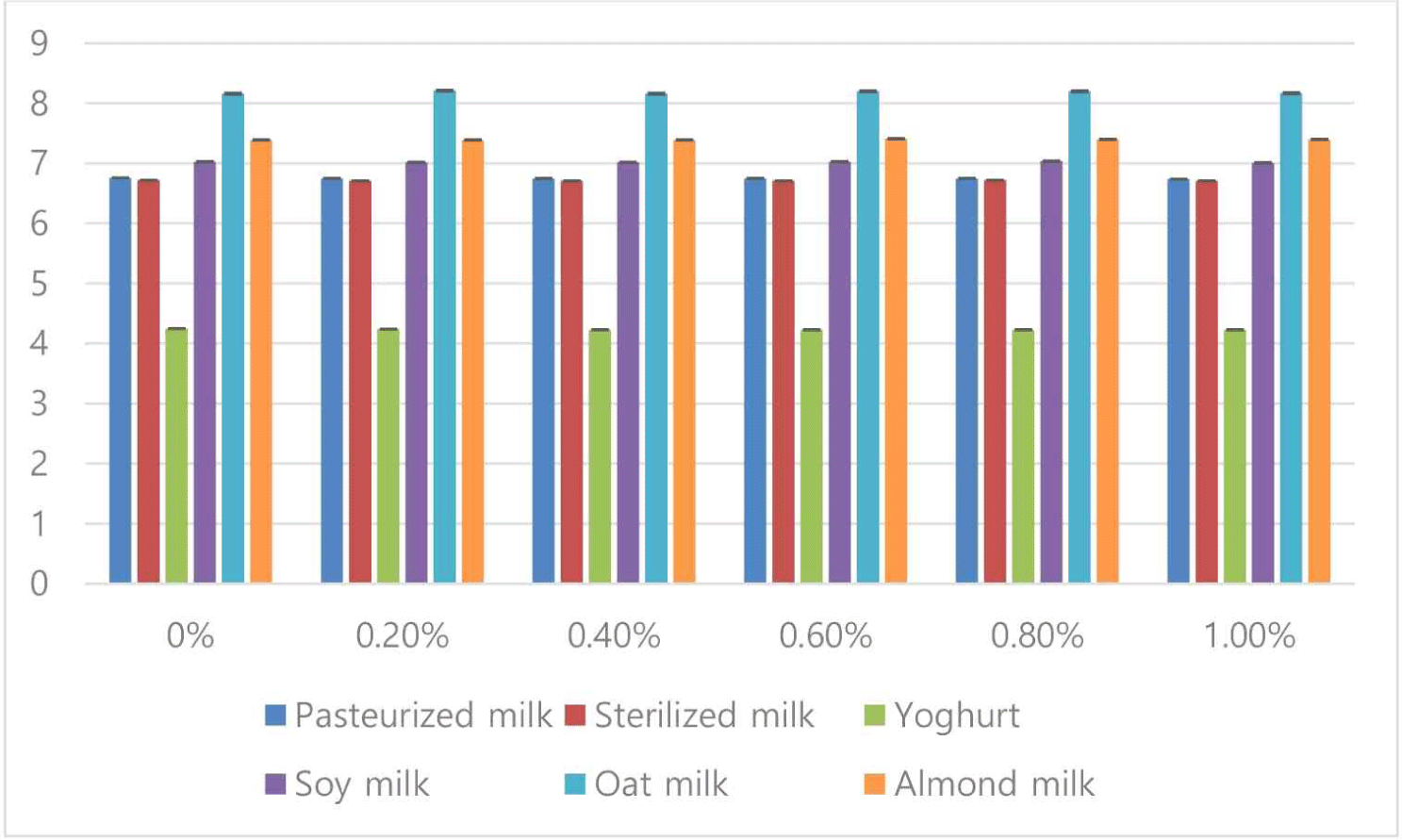
Furthermore, Fig. 9 described the color-change procedure in dairy-based foods and nondairy-based foods supplemented with various addition of anise oil. In this study, dairy-based foods and nondairy-based foods supplemented with various addition (0.2% increments from 0% up to 1%) of anise oil were predicted to change to the color of light yellow (Fig. 9). Therefore, among the characteristics of dairy and non-dairy products containing anise oil, color grade tended to gradually decrease as the amount of anise oil added increased (Figs. 2–6).
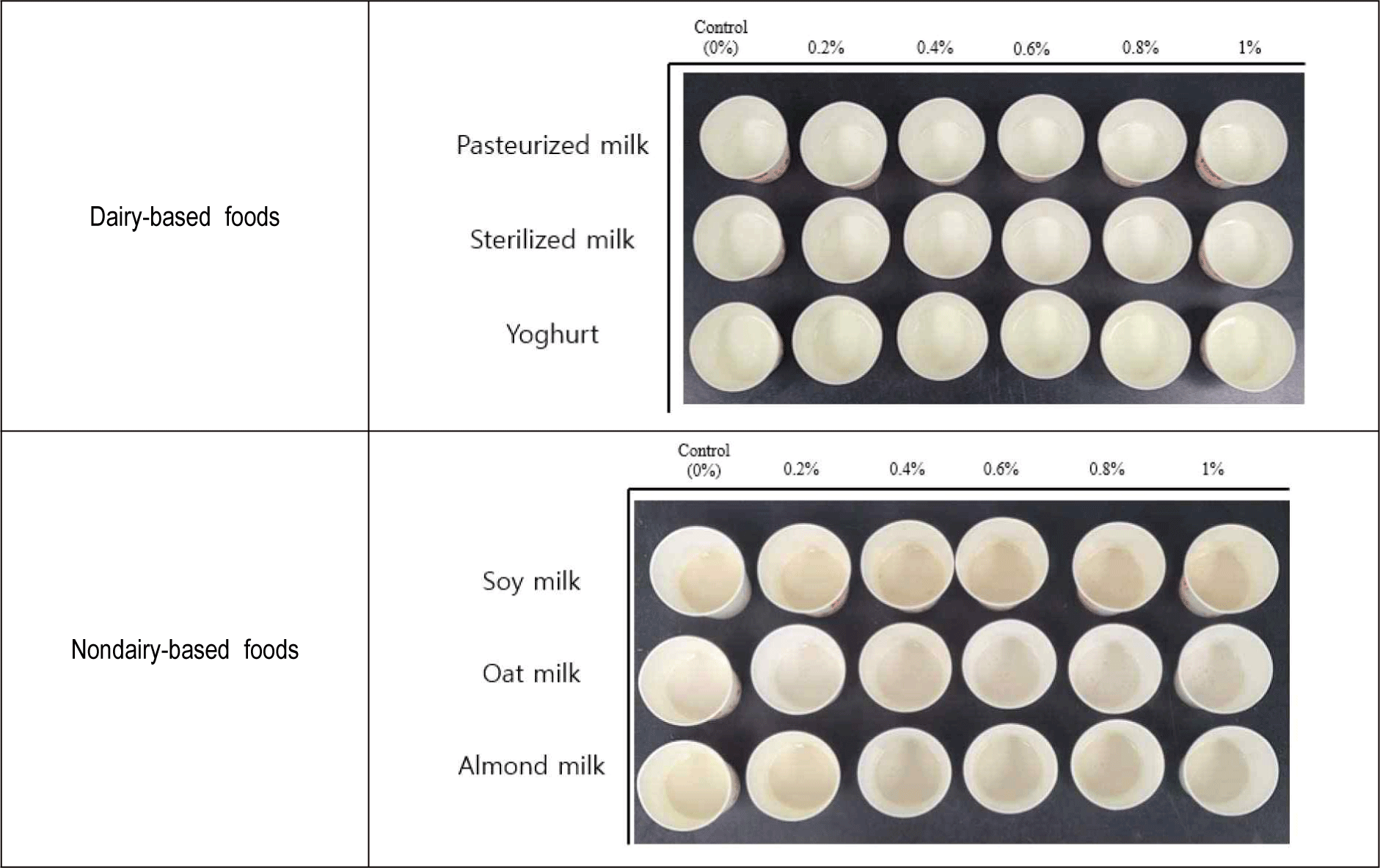
A review of studies similar to this study is as follows. When various concentrations of anise volatile oil and its oleoresin from 0.1 g/L to 1.0 g/L were added to yogurt and stored for 20 days, acidity and syneresis gradually increased [10]. However, all samples showed a decrease in pH and total solids content [10]. In particular, adding anise essential oil and oleoresin at a concentration of 1.0 g/L was found to be very effective in inhibiting the growth of spoilage microorganisms in yogurt. It is believed that this could be used as a food preservative for yogurt in the future [10].
The anti-bacterial activity of anise oil was observed in Gram-positive bacteria (B. cereus and S. aureus) and Gram-negative bacteria (C. sakazakii, E. coli, and S. Enteritidis) (Data not shown). It was shown that as the concentration of anise oil added increased, it had a positive effect on anti-bacterial activity (data not shown). Through this study, it was found that anise oil can be used as a natural biopreservative with anti-bacterial activity so as to promote food safety. In addition, future research is required to utilize it as a bio-functional food material in the food industry.
The main ingredient of anise oil was trans-anethole (90.1%), which exhibited much higher antioxidant activity than BHA and BHT [11]. Therefore, the antioxidant effect of anise oil could be used to protect fat-containing foods [11]. Furthermore, because essential anise oil could be a potential source of new antimicrobial agents, it could be valuable as an alternative drug against Trichophyton rubrum [12]. Additionally, after exposure to anise oil for 6 hours, the population of E. coli O157:H7 and Listeria monocytogenes decreased by 1.48 and 0.47 Log CFU/mL, respectively [13]. In other words, it is evaluated that adding anise oil to food can increase the safety of food by showing antimicrobial activity [13]. It is known that the main active ingredient responsible for the antibacterial effect of anise essential oil is anethole, and the anethole present in essential anise oil accounts for approximately 97% [13].
Addition of anise oil to sheep was shown to suppress methane emissions in vitro in a linear manner [14]. This was because anise oil could inhibit microbial protein synthesis, primarily by limiting ammonia nitrogen availability in the rumen [14]. Also, adding anise oil to feed at a level of 200 to 600 mg/kg improved the average daily feed intake and also egg quantity of laying hens with no side effect on egg laying rate and feed conversion rate [14]. It was also found that the effects of anise oil supplemented in diets at these levels not only improved the oxidative stability of the serum, liver and yolk of laying hens, but also increased the antioxidant status of the egg yolk, which could extend egg storage time [14,15].
According to a previous study on the anti-bacterial activity of anise, it was investigated in the order of B. cereus, E. coli,Salmonella typhimurium, S. aureus, and so on [16]. In particular, B. cereus and S. aureus (Gram-positive bacteria) were statistically more sensitive to anise extract than E. coli and S. typhimurium (Gram-negative bacteria) [16]. Solvent extracts obtained from anise seeds showed higher anti-bacterial activity than those obtained from the aerial parts and anise [16]. It is thought that the different effects of extracts from different parts of anise would be due to differences in phytochemical constituents, because different parts have different levels of several biologically active materials [16].
In conclusion, further research should be conducted to help improve quality by applying the various functions of anise oil to various foods as well as various dairy products.

